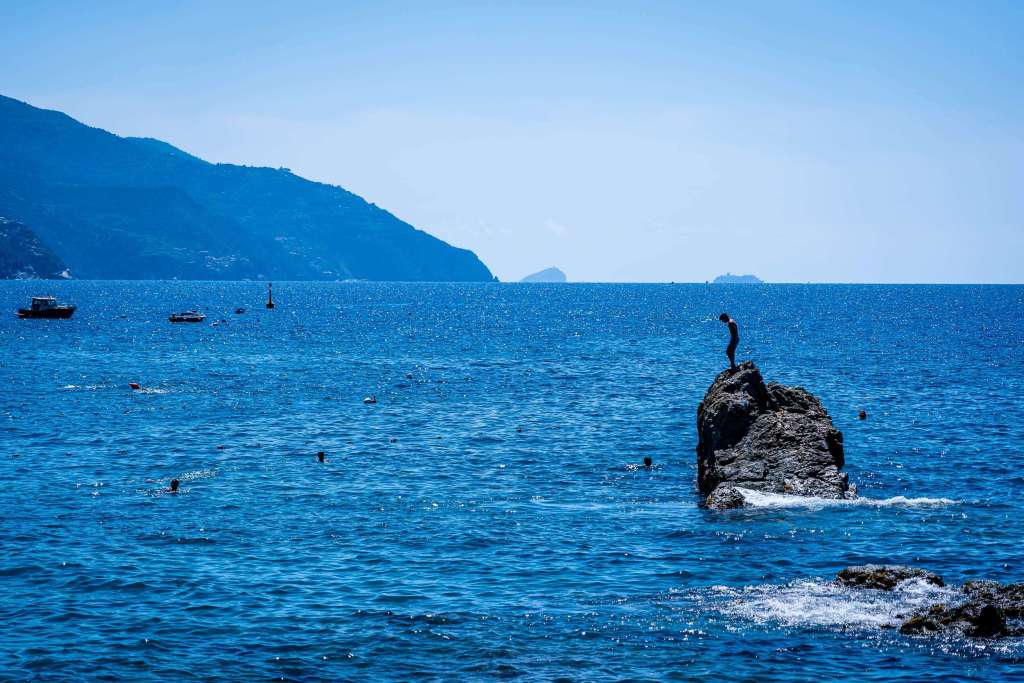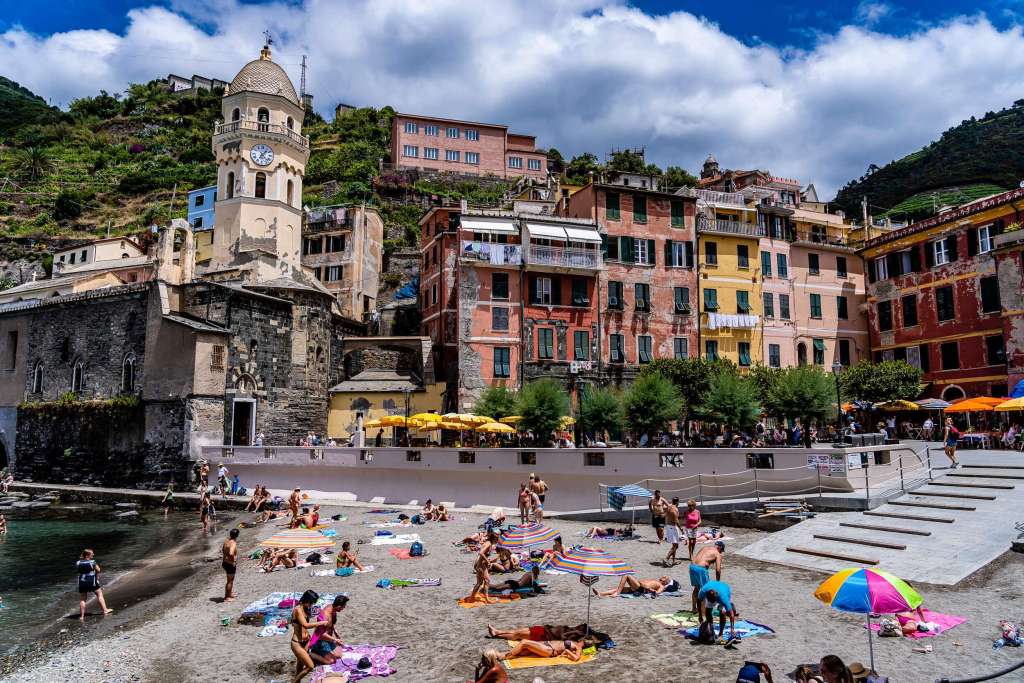Could the Cinque Terre Collapse?
Over Easter weekend, local authorities in Cinque Terre, Italy, once again sounded the alarm. Without legislation to restrict the flow of tourists, the Cinque Terre is at risk of collapse.
This is not a new story for Italians. To illustrate, here are a few similar headlines from over the years.
- Cinque Terre is booming with tourists. But it risks collapse. How to avoid it – La Repubblica April 10, 2023
- Cinque Terre Town Pushes Train Company to Limit Tourist Numbers (The Local.it in 2019)
- Italy to impose limits on visitors to Cinque Terre with tourist ‘ticket’ system – (The Guardian 7 years ago.
- Italy to Limit Tourists to Cinque Terre – (Smithsonian Magazine 2016)
Every Easter, the Cinque Terre is overrun with tourists. As predictable as the crowds, the Italian press lights up with articles like this Assault on the Cinque Terre. “We need a law for tourist flows, otherwise there will be chaos.”“
Meanwhile, the Italians I celebrate Easter with looked at the headlines, shook their heads and said, “It happens every year.”
As a new Italian citizen who has visited the Cinque Terre, I had questions. First, when they say “Cinque Terre collapse” do they mean physical collapse? Next, I wondered, since I love visiting the Cinque Terre, am I part of the problem?
Hence I did a little research. Here’s what I found. I’d love to hear your thoughts on mass tourism. Please feel free to share them in the comments below.
Is the Cinque Terre Collapsing?
The quick answer to this one is, literally speaking, yes. There are parts of the Cinque Terre at risk of collapsing. In fact, on Easter day, part of the Monesteroli stairway in the Cinque Terre National Park collapsed.
So are tourists to blame? Or is this a natural thing like California could slide off into the ocean one day due to earthquakes?
That answer is a little more complex and warranted my digging into the history of the Cinque Terre. Here’s where things got interesting.
Short History of the Cinque Terre
People have lived along the coastal region of Liguria since the Bronze Age (3300 BC to 1200 BC). Despite the steep, uneven terrain, five small neighboring towns took shape. By the 15th century, locals started to use the name Cinque Terre, meaning five lands. These five lands would become five towns of the Cinque Terre as we know them today. Riomaggiore, Manarola, Corniglia, Vernazza and Monterosso.
As you probably know, Italy unified in 1870. Infrastructure like rail lines came after unification. By 1960 a coastal line between Genoa and Rome was complete. Hence the villages of the Cinque Terre were connected by train.
Tourism arrived shortly thereafter in the 70s. Because of its scenic and cultural value, the Cinque Terre became a UNESCO World Heritage “cultural landscape” site in 1997. After that local authorities established the Cinque Terre National Park in 1999 with the hope tourism would grow.
Cinque Terre Photo Gallery
To see why the Cinque Terre is famous for its beauty check out our Pictures of Italy gallery with 40 pictures of Cinque Terre Italy. Plus, don’t miss our tips for less crowded but equally beautiful destinations along the Ligurian coast in the related links below.
Cinque Terre Tourism
To me, juxtaposing the history of the Cinque Terre with the more recent tourism makes sense of the headlines. In other words, train lines built to connect small fishing villages sixty years ago now service over 2.5 million tourists annually. Historically, Italians did not construct The Cinque Terre train line to host the crowds it does today.
Add natural disasters like the 2011 flood that killed 13 people in the Cinque Terre and tourists so daft they flip-flop fines, and words like “fragile, collapse, and even assault” make more sense.
So what does that mean for my and possibly your desire to see this stunning corner of Italy?
What to Know Before Visiting Cinque Terre, Italy
In 2017 Italy introduced a city tax in Riomaggiore. If you stay in the region between March 1st and October 31st, your hotel will charge you 2€ per person per day for the first three days. The tax helps cover maintenance and emergency medical services. Both for locals and those visiting flip-floppers I mentioned earlier.
The Best Time to Visit the Cinque Terre
The best time to visit the Cinque Terre is during off-and-shoulder seasons. Because the Ligurian coast enjoys a mild Mediterranean climate, tourism starts in May and goes into October. If you can plan a trip to Cinque Terre in late April or the very end of October, you can relax and enjoy one of Italy’s most colorful coastlines.
As with all Italy’s top destinations, the two central weeks of August are the absolute worst times to visit. Additionally, unless you want to see the famous Venerdì Santo (Good Friday) procession avoid the Cinque Terre around Easter.
Conclusion
Although the headlines seem dramatic, talk of a Cinque Terre collapse is both literally and figuratively just.
Since the original intent of creating the Cinque Terre National Park was to draw as many people as possible to the Cinque Terre, it risks a similar fate to Venice and the Trulli of Alberobello.
Yes, dollars come in, but local lifestyle and culture are often displaced. As writer Maurizio Maggiani said, “the tourist overdose suffocates villages.”
I’m not saying you shouldn’t visit the Cinque Terre. Instead, I’m suggesting only going in the off-season because it’s good for you and the locals. You get to avoid the crowds, and locals who depend on tourism won’t suffer the swing between feast and famine.
Subscribe to get information about Italy’s Hidden Gems in your inbox.
Are you an introvert who loves to travel? Do you want to see Italy but have to travel on a tight budget? We’re Paolo and Brandy. Together we have been traveling across Italy for over a decade. After becoming dual Italian American citizens we moved to Italy to live out our early retirement dreams. Now we focus on sharing information about Italy’s hidden gems and what it’s like to travel Italy in the off-season. Subscribing below to get a taste of la dolce vita in your inbox.
References








A super informative post about Cinque Terra. I hope that restricting the flow of tourists helps
Me too, although apparently the hardest part is getting the local governments for each of the five towns to agree on how.